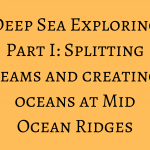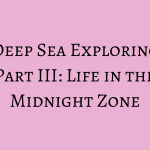Deep Sea Exploring Part II: Deep Sea Hydrothermal Vents.

In the darkest parts of the ocean lay mysterious landscapes fueled by magma and toxic chemical compounds. Where boiling temperatures, iron sulphides, and oxygen depleted water swirl, forming a hostile environment on the seafloor. Doesn’t sound very welcoming, does it?
Hydrothermal vents are the geysers of the seafloor, spewing magma-heated seawater that can range from 60 °C to over 400 °C. These vents occur along the seams of tectonic plates in areas known as Mid-Ocean Ridges (did you catch our article about these in Deep Sea Exploring Part I last month??) where the Earth is creating new oceanic crust through constant volcanic eruptions. Hydrothermal vents were discovered off the coast of the Galapagos Islands only 43 years ago in 1977 and they have been blowing our minds ever since. The vents are driven by volcanic action and magma that is close to the seafloor. Near the underwater volcanoes, sea water seeps below the seafloor and is superheated by magma. The hot water accumulates dissolved minerals and chemicals such as iron and hydrogen sulphide as it flows through the rocks and sediments. As the water shoots upwards through the seafloor, minerals like anhydrite build up around the water spout, creating a chimney-like structure that surrounds the vent. Some of the superheated water is full of minerals that appear black, causing the water to look like dark smoke. These are called ‘Black Smokers’, emerging from the ocean floor like smoking volcanoes, billowing ash.
What is truly amazing about these deep sea landscapes is that they are teaming with life, life that breaks most of the rules that we have established here on the Earth’s surface. Life as we know it at the surface and in the shallow ocean is driven by the sun. Plants that conduct photosynthesis are the foundation for most other life. However, at 2500+ m below the surface, light from the sun is nowhere to be seen. The ocean is split into 3 zones: the Sunlight Zone (abundant light, down to 200 m), the Twilight Zone (some light, down to 1000 m). After 1000 m, sunlight ends and the darkest section of the ocean, the Midnight Zone, begins. Hydrothermal vents exist in the Midnight Zone, so how does life thrive in the boiling depths?
The unique, hydrothermal ecosystems depend fully on the extraordinary microorganisms that can turn chemicals into energy through a process called chemosynthesis. The microscopic bacteria create chemical reactions, often using hydrogen sulphide (4H2S) and carbon dioxide (CO2), which releases energy and sugar for the bacteria to thrive on. Hydrogen sulphide is toxic to most other known organisms on Earth yet is the basis of life for these bacteria. These extreme microorganisms are the foundation for this deep, volcanic ecosystem as they provide a food source for many larger organisms to feed on. The food chain in the vent area contains hundreds of species including shrimp, crabs, corals, giant tube worms, fish, and octopus that create a cozy life for themselves amongst the smokey, spewing vents. Such incredible diversity is a special ocean discovery, and luckily is not limited to the waters around the Galapagos Islands. We have our own little piece of magma-heated, bacteria rich paradise much closer to home.
Off the coast of Vancouver Island, situated 250 km southwest of the Ucluelet Aquarium, there is a large portion of the Juan de Fuca Ridge called the Endeavour Hydrothermal Vents Marine Protected Area. This hydrothermal vent field, like many others around the world, has incredibly significant biodiversity of bacterial and animal life. The abundance of nutrients, warm temperatures, and bacteria leads to a large, diverse food chain that thrives despite the extreme conditions. Within the Endeavour field, there are at least 12 known species that have not been recorded anywhere else on Earth. In some hydrothermal vent areas, there can be upwards of half a million organisms per square metre. The deep, open ocean has a relatively low concentration of life, so these spectacularly productive hydrothermal vent areas are like an oasis amongst a desert.
Is the boiling, dark hydrothermal vent field starting to sound more welcoming? Maybe not for you or I, but for hundreds of deep dwelling species a hydrothermal vent field is as good as it gets. These strange landscapes are an amazing intersection of intense geological processes and deep sea marine biology, with just a touch of alien mystery to keep it interesting. The deep ocean continues to keep us guessing and surprising us with new and amazing discoveries. The vast and largely desolate open ocean even holds species that to this day, no one has seen alive. Only remnants washed ashore give us clues to the likely multiple species that roam the deep open ocean. Keep your eyes open for Part III to explore the whispers of elusive deep sea creatures yet to be confirmed alive.
Written by Jordan Hawkswell




